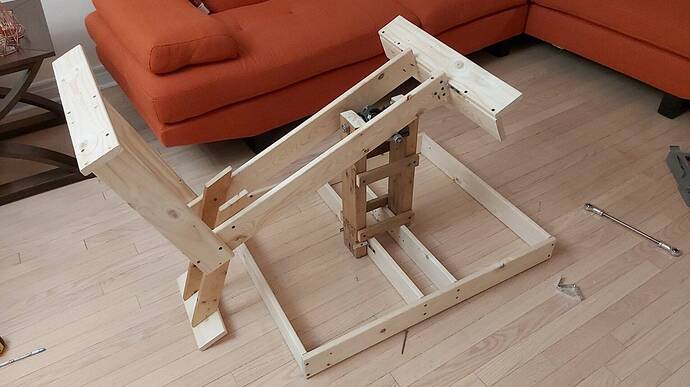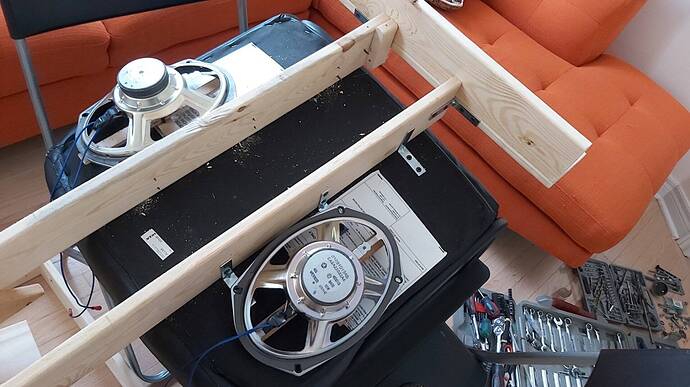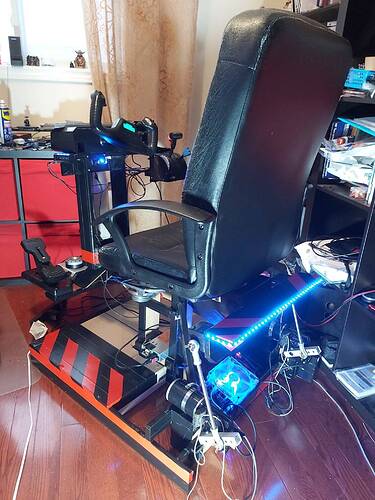Some of you may know me from the three Canadian airports I made, but now I want to share a motion simulator project I just completed. I recently became interested adding some motion to VR, but I quickly learned that commercially available rigs are very expensive, so entry cost is too high, and there is no motion compensation solution that works well with WMR OpenXR (Reverb G2), rendering some solutions unsuitable. So that was disappointing. Then I learned that people are building those rigs themselves. I read about that and I was hooked. Research followed, parts were ordered, and soon I started building.
When I finished the initial tuning and tried it in VR on my HP Reverb G2 for the first time, I was speechless. The result surpassed my expectation. Similar to switching to VR, this is another moment of
OH MY GOD!!! This is what VR is meant to be. I can never go back now.
This is what I wanted, the project is so worth a few days’ work invested in it and more. I can never go back from VR+motion for flight simulation now, that’s official! The level of realism and immersion is like going from pancake to VR again.
Here’s a detailed video of the rig, with the flight demo, hardware and software walkthrough. Watch the beginning if you are interested in the concept, and all the details follow the demo, for those interested.
- 2x 12V motors: 180 WATTS (.24 HP), 50:1 gear ratio, 60NM torque
- Arduino Uno R3 with customized SMC3 firmware
- IBT2 motor drivers
- FlyPT Mover
- DIY vibration transducers (buttkickers) connected to SimShaker for Aviators + Sound Module
- HP 750W power supply,
- Custom 3D-printed VR dual encoder control box
- Reverb G2 WMR HMD
- Microsoft Flight Simulator.
- Construction is mostly wood, with DIY universal joint made of 4 pillow block bearings; repurposed office chair.
Here’s a summary:
Pancake: you are looking at a plane that you are flying. Fully disconnected.
VR: you ARE INSIDE the plane that you are flying. (waiting for VR controller support to actually INTERACT with the plane you are flying in 3D, instead of clicking a 2D control representation with a mouse).
Motion rig + VR you ARE INSIDE and FEEL LIKE YOU’RE INSIDE the airplane.
It really affected the way I fly - much more like in real airplane I avoided sudden control movements, steep turns and hard landings (other than for testing) and tried to fly smooth, so I won’t be jerked around. It got my flying much closer to realistic instantly. The difference is between knowing you shouldn’t make sudden movements but not feeling anything when you do, and actually feeling everything you do with your controls. And a hard landing would really kick your butt hard!
It’s just 2DOF, but this is another level of immersion. This is amazing, I was grinning and laughing during my first test flight. When I stopped after a hard emergency landing, I just started laughing for a minute like an idiot, and couldn’t stop.









